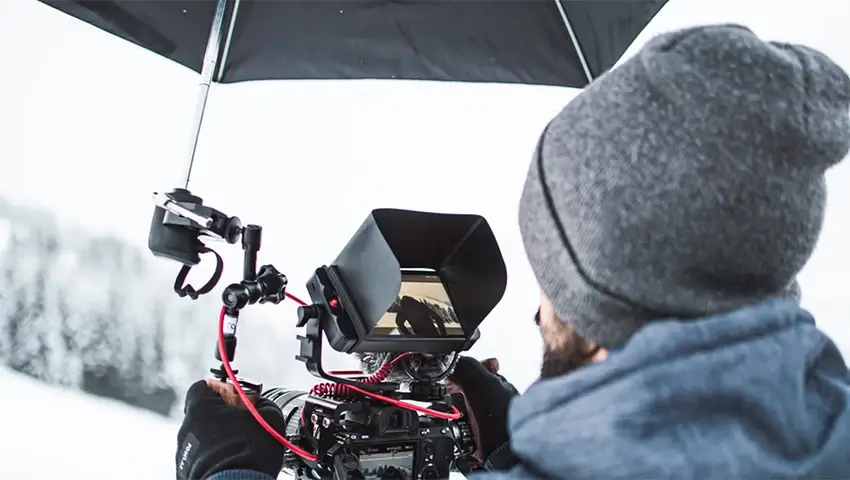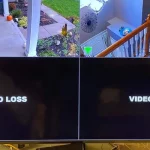When were video cameras invented, and how has their evolution shaped modern security systems and personal communication? Video cameras have become an essential part of daily life, from personal use to advanced security systems protecting homes, businesses, and public spaces. But have you ever wondered when video cameras were first invented? In this article, we’ll take you on a journey through time to explore the fascinating history of video camera technology and how it has shaped the world of security.
Contents
The Birth of Motion Pictures
The invention of video cameras can be traced back to the birth of motion pictures. In the late 19th century, inventors began experimenting with ways to capture and display moving images. Thomas Edison, famous for his work with the light bulb, created an early version of a motion picture camera in 1891. His invention, the Kinetoscope, allowed for the viewing of short films through a peephole.
However, it wasn’t until the work of other inventors like George Eastman and the Lumière brothers that motion pictures gained widespread popularity. These early cameras were film-based and could only display moving images for a brief moment, marking the beginning of the cinematic era.
The First Video Camera: The Electronically Scanned Image
The true video camera, as we know it today, began to take shape in the 1920s and 1930s. One of the most pivotal inventions in this development was the iconoscope, an electronic scanning device that allowed images to be transmitted electronically. This groundbreaking technology was developed by Russian-American engineer Vladimir Zworykin, who is often referred to as the “father of television.”
In 1929, Zworykin filed a patent for the iconoscope, which led to the first practical video camera. Around the same time, Philo Farnsworth, another American inventor, independently developed the first fully electronic television system, including a camera. Farnsworth’s invention was able to scan images and convert them into electrical signals, which could then be broadcast over the airwaves.
Both Zworykin and Farnsworth made significant contributions to the video camera’s development, but it was Farnsworth’s work that would lead to the first commercial video cameras used for television broadcasting.
The Evolution of Video Cameras in the 20th Century
As television became more popular in the 1950s, video cameras evolved rapidly. Early video cameras were large, bulky machines primarily used for television production. They still used analog technology, and most home video cameras were film-based, requiring users to develop film in a darkroom.
The next major leap came in the 1960s when color video cameras were introduced. These cameras could capture full-color images, a massive improvement over black-and-white film. The 1970s saw further advancements with the development of portable video cameras. These cameras used smaller film reels, making them more convenient for everyday use.
The late 20th century marked the transition from film-based technology to electronic video cameras. Video cassette recorders (VCRs) and video cameras began to use electronic components to record and display images. This allowed for more convenient, faster, and more reliable video recording, which would become the standard for the next several decades.
The Digital Revolution
By the late 1990s and early 2000s, the world of video cameras underwent another major transformation. The shift from analog to digital technology revolutionized the way video was recorded, stored, and transmitted. Digital cameras allowed for better image quality, longer recording times, and easier editing.
This era also saw the introduction of digital video recorders (DVRs), which replaced traditional film cameras in professional video surveillance systems. As the cost of digital technology dropped, video cameras became more accessible to the general public, with consumers using them for everything from home video recording to security monitoring.
The introduction of webcams in the early 2000s allowed for live video streaming over the internet, further expanding the possibilities of video communication. Digital video cameras became increasingly compact and high-definition, paving the way for the advanced surveillance systems we use today.
Modern Video Cameras and Security Systems
Today, video cameras are more advanced than ever before. High-definition (HD) and 4K cameras deliver crystal-clear images, while AI-powered cameras can analyze video feeds to detect motion, recognize faces, and even track individuals or vehicles. Infrared and night vision capabilities allow cameras to capture footage in complete darkness, making them essential tools in home and business security.
The invention of video cameras has had a profound impact on security systems, allowing for constant monitoring and recording of activity in and around properties. With advancements like cloud storage, mobile connectivity, and advanced image processing, modern security cameras provide real-time alerts, remote monitoring, and high-quality footage, all of which are essential for protecting homes and businesses.
Impact of Video Cameras on Industry
The invention of video cameras has had a profound effect on various industries, transforming how businesses operate, communicate, and ensure security. From entertainment to surveillance, the impact of video camera technology has been felt across multiple sectors. Let’s look at a few key areas where video cameras have had a lasting impact:
1. Film and Entertainment
The entertainment industry was one of the first to benefit from video camera technology. From the early days of motion pictures, filmmakers relied on video cameras to capture and broadcast their stories. Over time, the adoption of high-definition and 4K cameras has allowed for visually stunning movies, TV shows, and documentaries. The introduction of digital video cameras further revolutionized the industry by reducing the cost of production and editing.
Today, video cameras have become indispensable in creating content for platforms like YouTube, TikTok, and streaming services such as Netflix, which rely heavily on high-quality video production.
2. Security and Surveillance
One of the most important and wide-reaching impacts of video cameras has been on security and surveillance. Before the advent of video cameras, security was largely dependent on physical presence and periodic patrols. With the introduction of video surveillance systems, businesses, homes, and public spaces could now be monitored 24/7 with real-time footage and recordings.
In industries such as retail, finance, and healthcare, video surveillance cameras provide a reliable way to monitor employees, prevent theft, and ensure compliance with safety regulations. Security cameras also allow for evidence collection in case of criminal activity, making them a critical tool for law enforcement.
3. Education and Training
Video cameras have also revolutionized the education sector. With the development of affordable video equipment, educators can create engaging instructional videos, host live online classes, and record lessons for students to watch later. This has made education more accessible and flexible, especially with the rise of online learning platforms and virtual classrooms.
In training and corporate environments, video cameras have facilitated remote training sessions, presentations, and performance reviews. Training simulations that use video technology are now common in fields like aviation, medical procedures, and industrial safety.
4. Marketing and Advertising
The marketing and advertising sectors have leveraged video cameras to engage consumers and create visually appealing ads. From commercials on TV to social media advertisements, video content has become one of the most effective ways to capture attention and deliver a message.
The ability to use video to demonstrate products, tell stories, and interact with audiences has opened up new possibilities for branding and customer engagement. Marketers also use video surveillance for consumer behavior analysis to understand foot traffic patterns, product interest, and more.
5. Research and Development
In the research and development (R&D) sector, video cameras play a vital role in capturing experimental data, monitoring industrial processes, and documenting the progression of various tests. Cameras are widely used in scientific research, particularly in fields like robotics, biology, and space exploration, where visual data is critical for analysis and results interpretation.
The ability to record and analyze complex processes has made video cameras essential for documenting R&D findings and sharing results with the scientific community.
6. Manufacturing and Automation
In manufacturing, video cameras are often integrated into quality control systems to inspect products on production lines. Automated video monitoring ensures that products meet the required standards before they are shipped out, reducing defects and increasing production efficiency.
Moreover, video cameras are used in remote monitoring and diagnostics for machines and automated systems. By using cameras to track equipment performance, businesses can predict maintenance needs and avoid costly downtimes.
7. Healthcare
Video cameras have revolutionized healthcare through applications like telemedicine, surgery recording, and patient monitoring. Telemedicine, for example, relies on video cameras to facilitate virtual consultations between doctors and patients, especially in rural areas where access to healthcare facilities may be limited.
In surgery, cameras are used in minimally invasive procedures (e.g., laparoscopy), providing doctors with high-definition visuals of the patient’s body, which improves precision and reduces recovery times.
Conclusion
Reflecting on when video cameras were invented underscores their enduring legacy and the exciting possibilities that lie ahead for video technology in security and beyond. From those early experiments in motion pictures to today’s sophisticated AI-driven cameras, their evolution has reshaped how we live and interact with the world, revolutionizing both entertainment and home and community safety.
Building upon this legacy, ZOSI remains committed to pushing the boundaries of security technology with innovative solutions, including AI-powered cameras. As technology continues to advance, the future of video cameras promises even smarter security systems and deeper integration with our daily lives.

